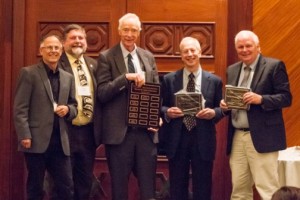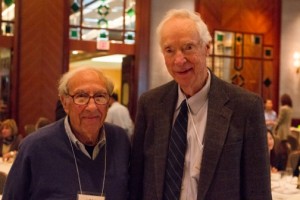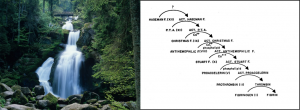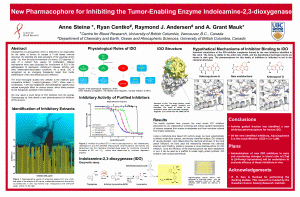November 13, 2012 was a big day for the CBR. The early Earl Davie Symposium was held at the Four Seasons hotel in downtown Vancouver (thanks to the generous sponsoring of Novo Nordisk), and the anticipation was thick at the opening breakfast. On top of a program boasting world renowned speakers like Charles Esmon and David Ginsburg, Earl W. Davie and his wife were sitting at the front table. To add a bit of extra science-sparkle, Dr. Davie had brought along his old friend Edmond H. Fischer, winner of the Nobel Prize in Physiology and Medicine in 1992.
Back in the 1960’s, Earl Davie and his colleagues devised the revolutionary waterfall cascade, describing how a series of proteins activate each other (like a waterfall sequence) to eventually form a blood clot and stop a bleed. Stopping a bleed by clot formation (partially achieved by the waterfall cascade), and making sure that the clot is broken down again when it is no longer needed, is a very delicate balance known as hemostasis. This balance has been studied and discussed for years and there are still many unknown factors to it.
The talks at the Earl Davie symposium therefore naturally revolved around bleeding and clotting. A surprising number of talks, however, diverged from the beaten track of blood loss and clot formation, and focused on other fields suspected to cross paths with hemostasis. Thus, several talks suggested links between hemostasis and various aspects of infection, and the hottest topic of the day was the potential of coagulation holding hands with a specific part of the immune system called the complement system.
The symposium also featured the work of many students and junior researchers in the CBR, who each gave a minute-long shot-gun talk, luring people to come to their research posters in the lunch- and coffee breaks.
There was a very curious and colloquial atmosphere amongst the participants even though the topics spanned wide. From the role of histones (which are proteins around which DNA is rolled – imagine licorice shoelace around a marshmallow) in sepsis (by Charles Esmon), over the various effects of coagulation factor XIII (by Diane Nugent), to the properties of free floating von Willebrand Factor in the blood vessels (by José Lopez), it all got tied together and back into blood research by David Ginsburg at the end of the day. Dr. Ginsburg also gave an overview of the evolutionary factors that simultaneously shaped the delicate balances of hemostasis (control of bleeding) and infection control.
It all ended with wine and cheese and lots of chatting, and from talking my way through the crowd, there was no mistaking the air of inspiration, new ideas, enthusiasm and a plain unspoiled joy of science.

The final bow (from the left): Dr. Ed Conway, Dr. Ross MacGillivray, Dr. Earl Davie, Dr. David Ginsburg and Dr. Charles Esmon.
Anne Steino.




